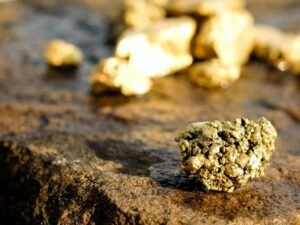The Gold Rush was a time of great change in the United States. The country was growing fast, and many people wanted to move west to take advantage of its newly acquired territories and resources. In 1849, gold was discovered in California, which led to a huge surge of migration from all over the world. The American gold rush involved people from across the country coming to California searching for gold.
People came from other parts of North America as well as Europe, China, India, Japan, and South America. The majority of them were from the eastern states. They came for one reason—to find gold! This boom and bust cycle was known as the Gold Rush.
How the Gold Rush Started

In 1848, while California was still a young state, the gold rush began in this Golden State. Although it had been inhabited since at least 1836, it wasn’t until the mid-1800s that it became an integral element of the American push into the West. As early as 1855, prospectors began to shift their attention elsewhere in the nation as the gold rush faded. As the population of California and the rest of the West grew, so did the gold rush, which became part of American history.
The discovery of gold in California in 1848 eventually led to a massive increase in the number of people moving West. Gold was discovered in rivers, creeks, and other locations along the Pacific Coast, making it easy to find. Westerners in the 18th century and early 19th century often used gold nuggets as currency.
California Gold
Before long, people realized that California’s gold deposits were much larger than those found in other states. As more people ventured to the West Coast, more gold was discovered, making the prospect of finding it even more lucrative.
Various factors led to the Gold Rush. California’s growing population and economic activity, the discovery of gold in California, and new transportation technologies, like the steam-powered paddleboat, all contributed to the Gold Rush.
The Gold Rush also had a lot to do with California’s geography. The state’s abundant rivers and mountains made it a great place to prospect for gold. The climate of California, its location between the Pacific Ocean and the Rocky Mountains, also made it a great place for prospectors to find gold.
A Short History of California Before the Gold Rush

California’s history dates back thousands of years to when the Native American people populated the state. In the 1600s, Spanish explorers explored the area and named many of its rivers, lakes, and mountains after their cities and regions.
The discovery of gold in California led to the growth of many new towns, which boosted the state’s economy and population. By the mid-1800s, the population of California had grown dramatically, making it one of the most important states in the country. The Gold Rush brought California even more attention, making it even more important.
The Gold Rush and The Aftermath
In the months and years after gold was discovered in California, people rushed to the West Coast and farmed the land, built canals to carry water for irrigation, built railroads, and began mining for gold.
In the early years of the Gold Rush, miners found both gold and other valuable minerals in California. Other states, however, had richer deposits of only one of these. The mining industry in California, which had begun with gold mining, was eventually replaced by mining other minerals, like copper and silver.
The Gold Rush also led to a large influx of Chinese immigrants, who worked as miners and other laborers. Eventually, the Gold Rush ended, as California’s gold was depleted.
Tales From The Gold Rush
One popular story is about the “Forty-niners,” or people who came to California during the Gold Rush. The Forty-niners were not a specific age group but a term for anyone who left their home state to try their luck in California during the Gold Rush.
One of the most notable Forty-niners was John Sutter, a Swiss immigrant who owned a large amount of land in California. People gave Sutter a hard time being a foreigner and not being wealthy enough to own so much land. Sutter, however, was a shrewd businessman, making money by trading with other people or using his land to grow crops and raise cattle.
The Backside of Gold
Gold mining corruption was a major problem in California during the Gold Rush. Many people with little or no mining knowledge made a fortune via the selling of mining claims. Bribery and fraud were common in the mining industry due to the fierce rivalry for mining claims.
Corruption frequently took place behind closed doors. A judge frequently gave a well-connected person a mining claim. People who bribed judges also had their claims approved by the courts. As a safeguard against bribery, several judges had their windows covered with walls that made it impossible for anybody to enter their chambers. Not simply the miners who had little mining expertise were harmed by this malfeasance.
The Gold Rush has inspired many stories and legends. People used to say that a person could smell gold when they were close to it and that it made their mouths turn dry and their hearts beat fast.
I hope this article was helpful and that you found it interesting. If you have any questions, we will be more than happy to answer them below.
All the best,
Pete
